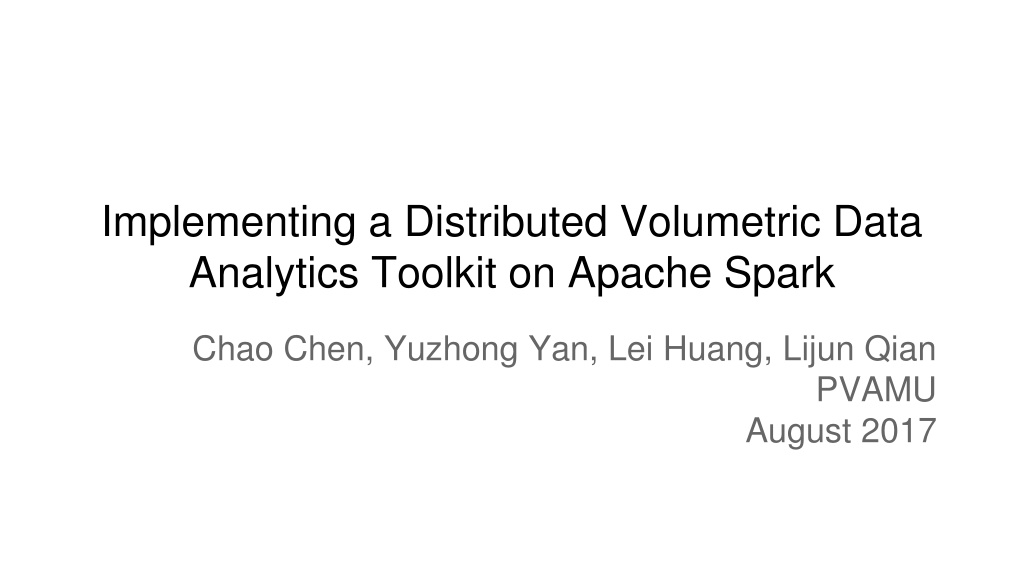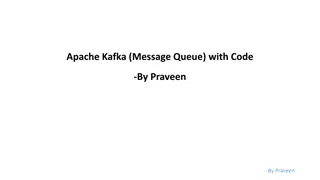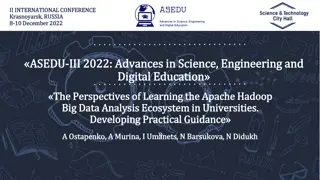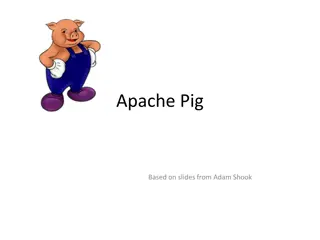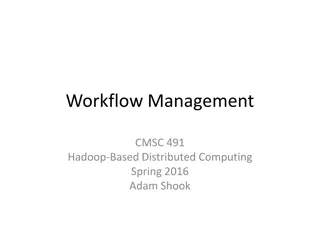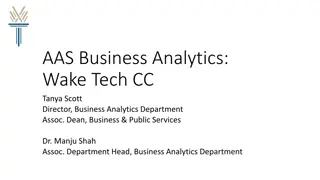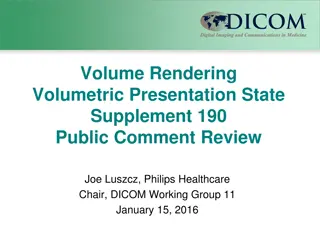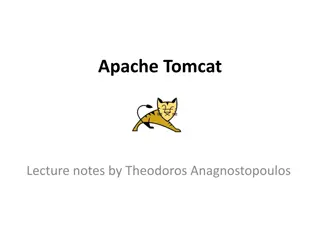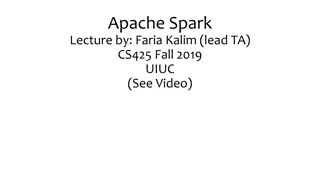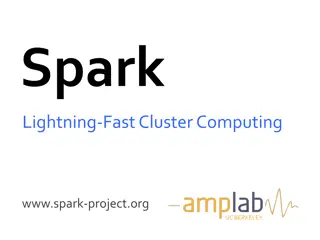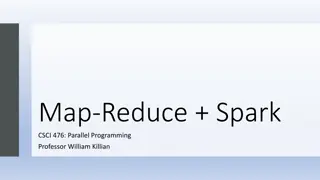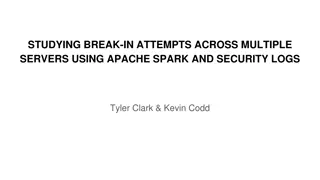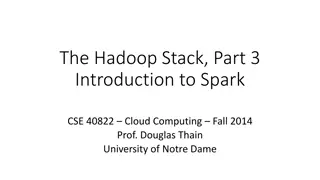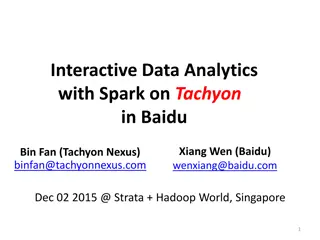Distributed Volumetric Data Analytics Toolkit on Apache Spark
This paper discusses the challenges, methodology, experiments, and conclusions of implementing a distributed volumetric data analytics toolkit on Apache Spark to address the performance of large distributed multi-dimensional arrays on big data analytics platforms. The toolkit aims to handle the exponential growth in data volume and complexity in scenarios such as the oil & gas industry. It focuses on scalability, performance, user interfaces, and software stack architecture.
Download Presentation

Please find below an Image/Link to download the presentation.
The content on the website is provided AS IS for your information and personal use only. It may not be sold, licensed, or shared on other websites without obtaining consent from the author. Download presentation by click this link. If you encounter any issues during the download, it is possible that the publisher has removed the file from their server.
E N D
Presentation Transcript
Implementing a Distributed Volumetric Data Analytics Toolkit on Apache Spark Chao Chen, Yuzhong Yan, Lei Huang, Lijun Qian PVAMU August 2017
Outline Challenges Main contributions Methodology Experiments and analysis Conclusion & future work References
The Normal Workflow Volumetric Data Data Scientists Computer Scientists OpenMP/MPI Codes Matlab Codes Product
The Big Challenge Exponential growth in the volume of data Increasing complexity and rapidly changing workflows Handle different formats of unstructured streaming data From computation-intensive to both data intensive and computation-intensive
Big Data in Oil&Gas Industry Growing Volume Size 300 MB / km2early 90s 25 GB / km2in 2006 Growing to PBs /km2 Growing Variety of Data Unstructured and semistructured well log and drilling reports Growing Velocity of Data Full 3D acquisition, 8GB/s - 20GB/s http://www.slideshare.net/bjorna/big-data-in-oil-and-gas?related=3
The Workflow to Handle Big Data Actual Data Sample Data/ Synthetic Data Data Scientists Computer Scientists Matlab Codes MPI Codes Product
Main Contributions The paper attempts to address the performance of large distributed multi- dimensional array on a big data analytics platform by applying the HPC experiences and practices. Scalability/Performance Friendly User Interfaces
The Update Workflow Actual Volumetric Data Data Scientists DMAT Product
Main Components in DMAT Data Distribution Distributed Data Structure Operations on Data Structure High Level Interfaces
Data Distribution SEGY or A3D
Problems of RDD in Spark Interfaces are still low level to domain specific experts Each partition is independent, and all mappers run independently The performance of accessing individual record is not good
VolumetricRDD Abstract Class hide details of RDD PlaneVolume/BrickVolume Metadata Info Load/Save Interface Operations on distributed partitions https://github.com/amplab/spark-indexedrdd
Templates in DMAT Granularity Sample Trace Plane Volume
Conclusion Spark provides good performance with in-memory RDD DMAT provides a bridge of domain experts and parallel computing by hiding details of parallelism RDD is simple, but performance differs greatly in different usages (Granularity and Memory) Algorithms, data distributions, and configuration of resources will affect performance; Deep profiling is the most important one to boost performance The overall performance of Spark is not as good as HPC, but productivity is better than HPC
Future Work More templates to handle other complex applications Support streaming data Integrate with other frameworks such as TensorFlow, DL4J, and Python support Debug and profiling interface GPU Support
Acknowledgements This research work is supported in part by the US NSF award IIP-1543214, the U.S. Dept. of Navy under agreement number N00014-17-1-3062 and the U.S. Office of the Assistant Secretary of Defense for Research and Engineering (OASD(R&E)) under agreement number FA8750-15-2-0119.
References 1. http://www.open.edu/openlearnworks/mod/page/view.php?id=41010 2. http://csegrecorder.com/articles/view/advances-in-true-volume- interpretation-of-structure-and-stratigraphy-in-3d 3. http://www.slideshare.net/bjorna/big-data-in-oil-and-gas?related=3 4. http://www.winbold.com/upstream/using-big-data-technologies-to-optimize- operations-in-upstream-oil-and-gas/ 5. https://databricks-training.s3.amazonaws.com/slides/advanced-spark- training.pdf 6. https://www.slb.com/~/media/Files/resources/oilfield_review/ors94/0794/p2 3_31.pdf
